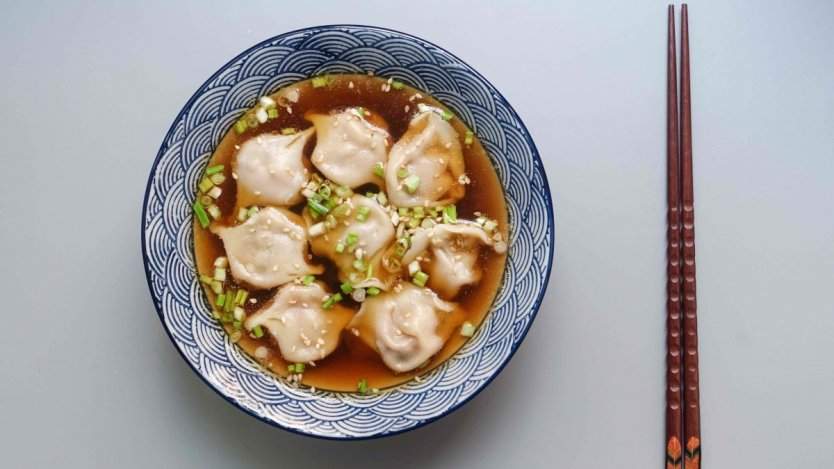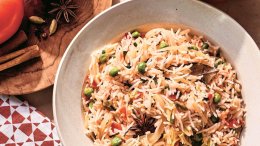Why is there a Chinese restaurant in every small town? And who are the families who run them? In 2016, journalist Ann Hui set out on a trek across Canada to answer those two ubiquitous questions and it was only after the story was published that she discovered her own family could have been included—her parents had run a Chinese restaurant, The Legion Cafe, before she was born. This discovery set her on a time-sensitive mission: to understand how her family had somehow wound up in Canada.
Chop Suey Nation weaves together Hui’s family story with those of other Chinese restaurant owners from coast to coast. Along her trip, she meets many iconic locals, including a Chinese-restaurant owner and small-town mayor, the owner of a Chinese restaurant in a Thunder Bay curling rink, and the woman who runs a restaurant alone on remote Fogo Island. Hui also uncovers the fascinating history behind “chop suey” cuisine, detailing the invention of classics like “ginger beef” and “Newfoundland chow mein”. Using her own family’s story as a touchstone, she reveals the importance of these restaurants to this country’s history and makes the case for why chop suey cuisine is quintessentially Canadian.
![Image for [node:title]](/sites/default/files/styles/article_freeheight/public/field/image/chop_suey_nation.jpg?itok=NmCCnFqe)
While planning the trip, I became obsessed with trying to find a single answer that could explain the spread of Chinese restaurants across the country. I wondered if there was a single starting point or a single place responsible for the ubiquity and uniformity of these tiny restaurants.
Earlier in my research, Henry Yu, a UBC history professor, had warned me not to get my hopes up. Here in Canada, he said, the spread of restaurants didn’t happen in a straight line. “It’s nodal,” he told me. Major cities became main nodes for the early Chinese immigrants—cities with convenient coastal locations, like Victoria or Vancouver. With the railway, those Chinese communities pushed farther east, too. Often entire villages or families would wind up in specific areas: The Chows from Hoiping settled in Vancouver; the Tsangs settled in Toronto; the Wongs in Kenora, and so on and so on.
From each of these cities, the restaurants spread too. One family would start a restaurant in Edmonton. Their cousins—sometimes with the assistance of their family in Edmonton—would move just outside of the city, to Spruce Grove. And then to Spring Lake. Then Carvel. Then Duffield.
Across decades, the restaurants spread and spread, until there was a Chinese restaurant in just about every town across Canada.
Initially it happened through word of mouth—letters sent via air mail and carefully timed long-distance calls. Now, much of it has moved online. After talking to Professor Yu, I grew curious and searched online for “Chinese restaurant for sale.” The search turned up ad after ad.
“SOLID BUILDING,” read an ad for the Szechuan Garden in Windsor. “GOOD AND STEADY INCOME. CLOSE TO UNIVERSITY.” In Gibsons, BC, a restaurant with red vinyl booths and white plastic tables was selling for $105,000. “Plenty of local traffic,” the ad said. “4.3 stars on Google Reviews.” And in Prince George, a “Chinese/Western restaurant” was for sale. “Could be customized to a Japanese restaurant to accommodate new business.”
Often, the ads emphasized a lifestyle for the entire family -- good schools nearby, safe communities, or grocery stores nearby. What they were advertising were not restaurants, but new lives.
![Image for [node:title]](/sites/default/files/styles/article_freeheight/public/field/image/choys_restaurant_boissevain_manitoba.jpg?itok=dKKZeW1s)
Su Fen Li, owner of Choy's Restaurant in Boissevain, Manitoba.
On the sixth day of our trip, we woke up at a Best Western in Brandon where we set out for a small town about an hour south, called Boissevain.
In addition to understanding how these restaurants spread, I was still curious about why so many of them seemed to look and feel exactly the same. Already, we had seen evidence of this on our trip. The same vinyl booths. Menus printed in the same font, with the same categories, and the same dishes. The same “Wing’s” brand plum sauce.
Many of the restaurants even had the same names. (David Chen, a blogger, would later write me to share the results of a study he’d conducted on Chinese restaurant names in the United States. He found that there are over 1,770 separate, independent restaurants in the US with the exact same name: “Panda Express.” Another 511 were named “China Wok.” Here in Canada, I was able to find at least seven separate restaurants sharing the latter name in southwestern Ontario alone.) These were restaurants separated by thousands of kilometres -- built well before the invention of the Internet made the sharing of ideas quick and easy -- yet these restaurants somehow all wound up doing things almost identically. Why?
In my early research, I had found mention of the 1,600-person town of Boissevain, and of Chinese laundries built there as early as 1891. I had seen photos of Boissevain’s local Chinese restaurant, with its classic chop-suey menu and wood-panelled walls. It seemed like the quintessential chop suey restaurant. I thought I might find some answers there.
We drove into town along one of its main streets, past an old grain elevator. We passed the town’s main attraction, a twenty-eight-foot tall fibreglass turtle with a green shell and orange belly named “Tommy the Turtle.” The turtle clutched in one of its limbs a Canadian flag, and in the other an American flag -- a gesture to the town’s proximity to the US. Not to be outdone, the wildlife museum right behind Tommy had a giant bear statue out front, staring straight at the turtle.
We rounded the corner, past a giant lumber yard and a trucking yard, towards the pink and grey building with a bright yellow sign—Choy’s Restaurant. As soon as I walked into the restaurant, a young woman wearing a hoodie and sneakers greeted me. I wasn’t sure what to make of her. Her hair was pulled back into a ponytail and she grasped her hands shyly in front of her like a teenager. She looked about eighteen years old.
“Does your family run this restaurant?” I asked her.
She nodded yes.
I paused for a moment, taking in the scene around us. The dining area was split in two rooms. The back room looked just as it had in the photos, with wood panelling and tables and chairs in neat rows. At the back of the room, three familiar-looking figurines were set up. They were the three Chinese gods, or san xing, which I recognized from just about every Chinese household I’d ever been in growing up. The one in the middle, with the long black beard and holding a gold nugget, represented fu, or fortune. The one on the right held a scroll to symbolize lu, or status. And the one with the long white beard, carrying a lucky peach, represented shou, immortality or a long life.
But the room where we were standing in looked more like a family room. There was only a single dining table. And on the table were remnants of what looked like the family’s breakfast—some crackers, a few slices of toast and some cut-up cucumber. There were also what looked like a toddler’s drawings—a child, I realized, who was likely hers.
“Are you the owner?”
She nodded again, this time a little shyly, and introduced herself as Su Fen Li.
It turned out Ms. Li was actually thirty-two years old—more or less my age. She had a four-year-old daughter, and the family treated the restaurant as an extension of their living room. She nodded to the front counter, where a gold maneki-neko or “lucky cat” sat on the counter in front of a flat-screen television. That was where she spent most of her time.
Ms. Li seated the two of us at a table in the dining room in the back. As we talked, I noticed her peering back and forth between Anthony and me several times, curious, as if trying to make sense of the two of us. I wondered what she thought of this person in front of her, Chinese but barely able to speak it, and her white husband. I thought how strange I must have seemed to her.
We ordered a few dishes—a Cantonese chow mein and, at her suggestion, a plate of sesame chicken. She disappeared into the kitchen to deliver the order to her husband. Then she came back out to chat with us while we waited for the food.
They had been in Canada about ten years, she said. She spoke in Cantonese, but with a heavy Toisan accent that made her sound like one of my dad’s relatives. I did the math. That would have meant she was just about twenty when she came here. She nodded. She had been running a small clothing stall in Guangzhou. Her husband was fixing air conditioners. But their relatives convinced them they could have brighter futures in Canada. Her husband’s sister—her sister-in-law—was already living in Canada, in Brandon. Her uncle, too, lived in Canada.
They worked a variety of jobs when they first arrived in Brandon, in restaurants, and at the local Maple Leaf Foods pork processing plant. They also tried Toronto, where she worked at a commercial laundry company. But after an entire year there, she received only a 25-cent raise—bringing up her hourly wage to $8.75. Plus it cost more and the traffic was terrible. So they moved back to Brandon.
There, they settled into a string of restaurant jobs. She continued waitressing and he cooked—first at a food-court Chinese restaurant at the mall, and later at a restaurant called the Golden Dragon, where she waited tables. It was her boss at the Golden Dragon who first told her about the restaurant in Boissevain. The couple who had run it for over twenty years were retiring and looking for a new couple to take over. Were they interested?
They took a trip out to Boissevain to see the restaurant. They rounded the corner at the grain mill, drove past Tommy the Turtle and then stopped in front of the short grey building with the bright yellow sign. She pulled her hands into the sleeves of her hoodie and shrugged. “We decided to try,” she said.
When I asked her about what was on my mind—about why so many of these restaurants were so similar—she laughed. It was something she had thought about before.
It was just like all of the other Chinese restaurants, she said. When they bought Choy’s, they were buying the entire business -- including the furniture, the equipment and all of its recipes. What the Choy family was selling them was not just a restaurant, but all of their expertise in running the restaurant. For the first month, Mr. Choy stayed with Ms. Li and her husband to show them how to run the restaurant, exactly the way he’d done in the past.
He spent entire days in the kitchen with Ms. Li’s husband, showing him the right way to wrap a spring roll, or the right amount of batter for sesame chicken. He also handed them a dust-covered binder filled with all of the recipes they would need to cook every single item on the menu. This binder and these recipes had been passed down from the previous owner, and the previous owner before that.
At the front counter, he showed Ms. Li how to run the front of house the same way it had always been done. He showed her how to fill out a cheque to properly bill a customer. How to punch in an order on the cash register. How to order new take-out menus from a supplier. Changing anything, including the name, would cost money. And the Choys had already proven their way of doing things could be successful, she said. The more he showed them, the more it became clear that it would easiest and cheapest to keep things exactly the same. And if they were ever to open a Chinese restaurant elsewhere, they’d likely do things exactly the same there, too.
Now, it had been almost a year. She wasn’t sure whether they would stay long-term in Boissevain. I asked if she’d had a chance to see the nearby provincial parks or lakes—or gone to the US, with the border nearby. But she just shook her head and sighed.
“We’re always working,” she said. “There’s no time to stop.”
The number of hours they spent at the restaurant didn’t seem to be adding up with the amount of money they were taking home. Each morning they opened the restaurant at nine and stayed until past closing twelve hours later. Her parents looked after their daughter.
She figured the couple was taking home maybe two thousand dollars each month.
“For this kind of money we may as well work for someone else.”
Another idea was to head out to a bigger city, like Edmonton. They’d heard stories of restaurant owners taking home profits that seemed unimaginable—four or even five thousand dollars each month. But again, she shook her head, as if to say she could never be so lucky.
“Life is made up of many decades,” she said eventually. “We’ll do this for now.”
Excerpted from Chop Suey Nation: The Legion Cafe and Other Stories from Canada’s Chinese Restaurants, by Ann Hui. ©2019. Published by Douglas & McIntyre. Reprinted with the permission of the publisher.













